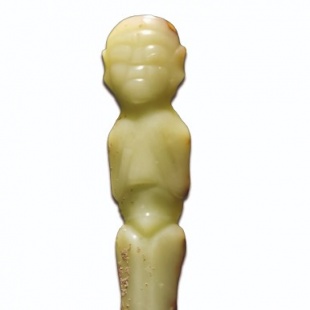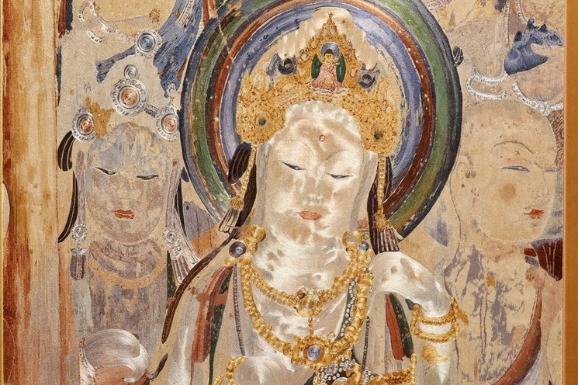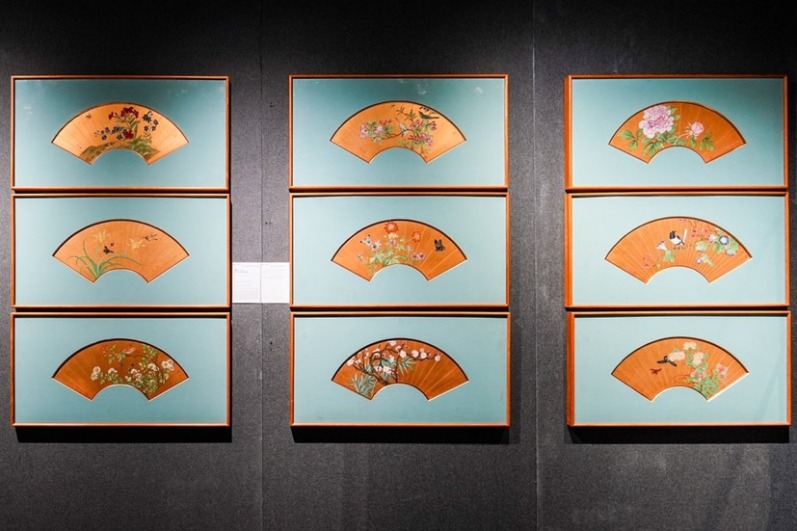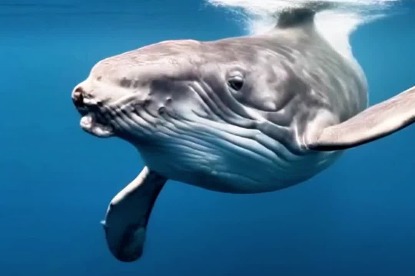Hongshan stakes foundation claim


Dragon totem
There's no doubt that jade is one of the most attractive aspects about Hongshan culture. The jade dragons unearthed or collected from the public have become symbols of this Neolithic culture.
According to Guo Ming, research librarian at the Liaoning Provincial Institute of Cultural Relics and Archaeology, dragon totems began to be presented on jade during the Hongshan culture period. More specifically, jade dragons started to appear in tombs around 5,500 years ago and may have existed even earlier.
"These jade dragons exhibit the most consistent composition across the distribution area of Hongshan culture, which spans nearly 300,000 square kilometers," she says.
From various Hongshan sites, two types of jade dragons have been found, both sharing a curled, serpentine body.
One type is the C-shaped dragon, represented by one piece discovered from rural Chifeng in 1971. The 26-centimeter-tall emerald green dragon has a small, short head; its mouth is closed, its eyes long and upturned, and nose protruding with symmetrical nostrils. It has a mane on its neck, whose tail tip is also curled upward. The slender dragon integrates characteristics of various animals, such as deer and serpents.
On its back there is a hole, and when the jade dragon is suspended with a string threaded through the hole, its head and tail align perfectly on a horizontal line. Archaeologists, therefore, speculate that the Hongshan residents had already accumulated some knowledge of gravity and calculation of force.
Another type — and the more frequently excavated one — is dubbed "pig dragon" for its chubby, pig-headed shape, along with standing ears, ferocious round eyes, wrinkled snout and tusks. Some archaeologists believe that the shape likely emanated from the bear.
So far, some two dozen "pig dragons "have been found. During a salvage excavation earlier this year at the Yuanbaoshan archaeological site in Chifeng's Aohan Banner, which dates back 5,000 to 5,100 years, three "pig dragons" varying in color, size and texture were discovered.
Among them is a palm-size, emerald green piece — 15.8 centimeters tall, 9.5 cm wide and 3 cm thick — that is considered to be the largest of its kind.
Usually the "pig dragons" also have one or two holes on their back — maybe used as accessories.
From the Niuheliang archaeological site in Chaoyang, Liaoning province, which is around 150 kilometers away from Chifeng, a pair of "pig dragons "were found as funerary objects laid on the tomb owner's chest, indicating their importance in ritual ceremonies, Guo says.
The Niuheliang site, dating back around 5,000 to 5,800 years, served as an ideological center for Hongshan society, demonstrating a significant unifying power, according to Guo.
Meanwhile, large "pig dragons" may also be applied as sacred objects in ritual ceremonies praying for rain and a good harvest, Liu Guoxiang, deputy director of the Chinese Academy of History, said in a previous interview with China Media Group. He has been studying Hongshan culture for three decades.
In later Chinese myths, the dragon is often depicted as a deity of rain. The Book of Changes, or I Ching, believed to have been compiled during the Zhou Dynasty (c. 11th century-256 BC), already conveyed such connection.
Nevertheless, the exalted status of wild boar in prehistoric northeastern China can be traced back thousands of years further, possibly due to its association with fertility and prolific reproduction.





































